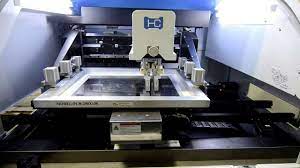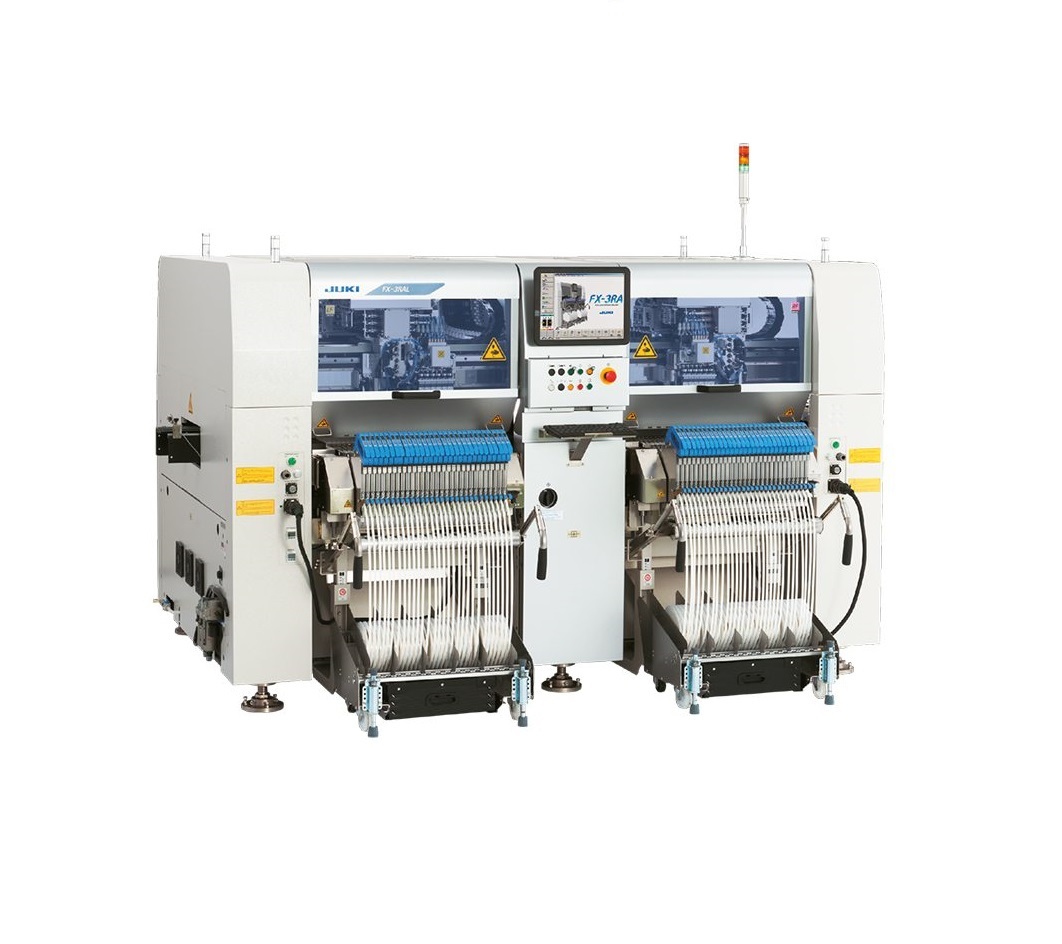Basics of SMT Machine and Solder Paste Printing
Originally known as planar mounting, was first used by IBM in the late 60s. They used the SMT machine to help them design small-scale computers. There was no going back for the SMT technology then. It was no longer used to design small-scale computers but the technicians used it to design guidance systems in the space program as well. The technology has been continuously improving ever since it was first used.

Want to know more about the basics of SMT machine and solder paste printing? Stay tuned then. You will find everything you need to know below.
What is SMT Solder Paste Printing?
While a lot of people already know this, but for those of you who do not know, solder paste printing is the most important part of the surface mount technology process.
The solder paste is in the form of fluid during the printing process. That’s because it is a mixture of powder and flux.
The major indicator of the solder paste fluids in the printing process is viscosity. If the SMT solder paste has low viscosity, it can easily fill the gaps and collapse. However, the high viscosity level indicates that it gets extremely easy to roll and peel the solder paste.
An important thing to note here is that the viscosity requirement in SMT solder paste is different at different levels. The viscosity requirement in most cases is extremely flexible.
Since the requirement of viscosity is different at different levels, a higher dependence is placed on the parameter settings of the printer and the SMT machine used in the printing process.
What You Need to Know About the SMT Machine Used in the Solder Paste Printing Process
The most critical aspect of the solder paste printing process is the quality of the SMT machine that is being used. In addition to this, the application of solder paste to the printed circuit board is also very important.
The main aim of the entire process is to deposit the accurate amount of solder paste to each of the pads that need to be soldered. The manufacturers can now achieve it with the help of screen-printing the solder paste.
The screen-printing of the solder paste is achieved by a stencil or a foil. In some cases, a jet printer known as an SMT machine is also used. According to a lot of experts, if this part of the process is not achieved properly, it can result in the majority of the defects.
What is the Most Common Method of Applying SMT Solder Paste?
The most common method of applying SMT solder paste to a PCB unit is with the help of squeegee blade printing. If you do not know about the squeegee blades, they are the tools that are used to apply the force.

Applying the right amount of force is extremely important to move the solder paste through the stencil to the PCB. The majority of the squeegees are made of metal but you can also get them in polyurethane as well.
Top Advantages of SMT Solder Paste Printing
The two main advantages of surface mount technology are the reduced weight and smaller size. It helps in aligning the components close together. Not only this, but the final products will be extremely light in weight and compact as well.
Furthermore, there are some additional advantages of SMT machines and solder paste printing technology as well. Let’s take a look at them below.
1. Autocorrect Placement of Components
There is a surface tension found in the solder components. The surface tension helps the components to align with the solder paste. As a result, there is a huge reduction in the placement errors of the components.
2. Cost-Effective
The components used in the SMT technology are smaller in size as compared to the larger through-hole versions. Since the components are smaller in size, their manufacturing cost is less than the larger components as well.
3. Flexible Design
Another huge advantage of SMT technology is its design flexibility. It allows the users and the manufacturers to combine SMT and through-hole manufacturing on the same board. As a result, you get greater functionality than ever.
4. Compatible with EMC
While through-hole components are not compatible with EMC, this is not the case with SMT components. They are electromagnetic compatible. That’s because they are smaller in size. Since they are small in size, you get a small radiation loop area that is perfect for EMC compatibility.
5. Faster Production Setup
The SMT components allow faster production and set-up. The reason behind this is that you do not need to drill the circuit boards for assembly. As a result, you can produce a PCB unit much faster as compared to using through-hole components.
Some SMT Machine Considerations for Effective Solder Paste Printing Process
There are some SMT machine key parameters listed below for you. These key parameters are extremely important to ensure that the solder paste printing process is carried out effectively. Let’s take a look at them.
1. Squeegee Speed
The speed of the squeegee will determine the time available for the solder paste roll in the apparatus and onto the PCB pads. The most common speed that is used is 25 mm per second.
2. Squeegee Pressure
It is highly important to apply a sufficient amount of pressure on the length of the squeegee blade. Applying the right amount of pressure will ensure that the stencil is wiped clean.
3. Squeegee Angle
In most cases, the angle of the squeegee is set to 60 degrees to the holders where they are fixed. An increase in the angle can cause the scooping of the paste while the decrease in the angle can result in the residue being left over.

Final Words
SMT machine and technology is highly popular among the users and the manufacturers because of the many benefits it offers. For this reason, it is no longer used to design small-scale computers but guidance systems in space programs as well.
Want to know more about the surface-mount technology? Contact us now!




